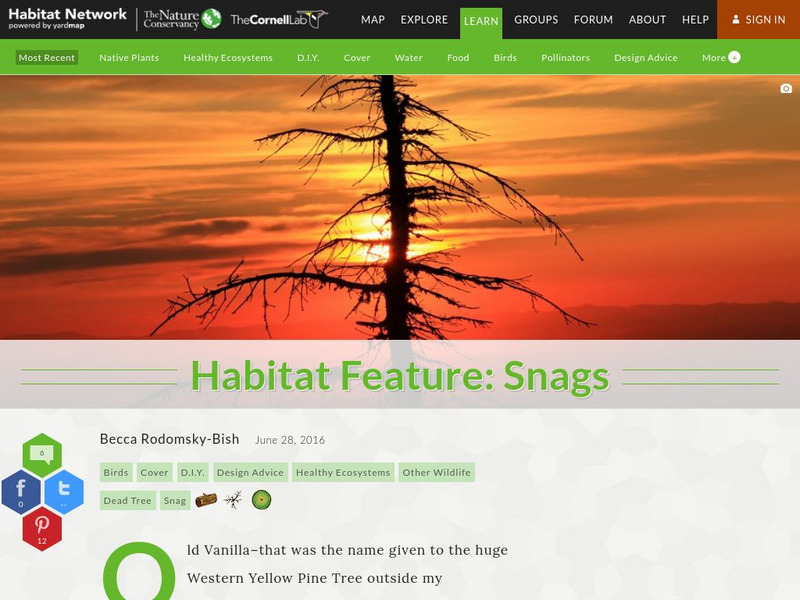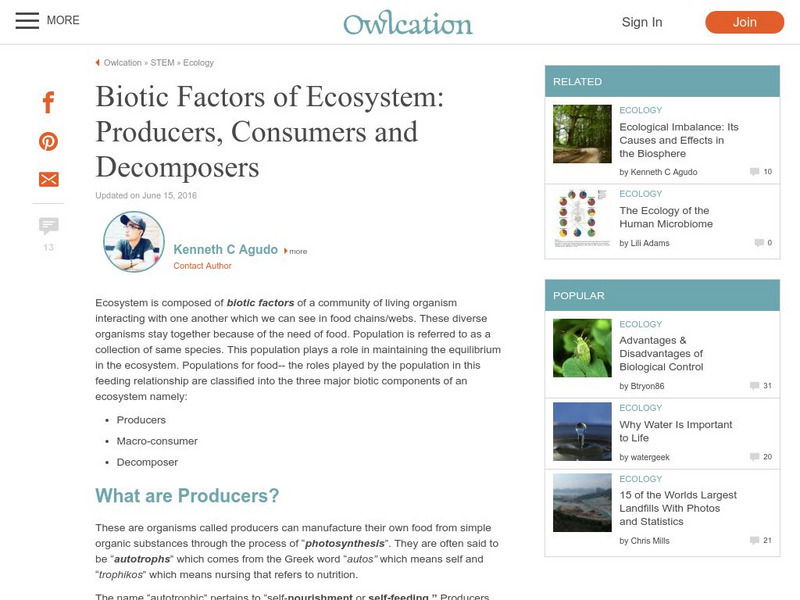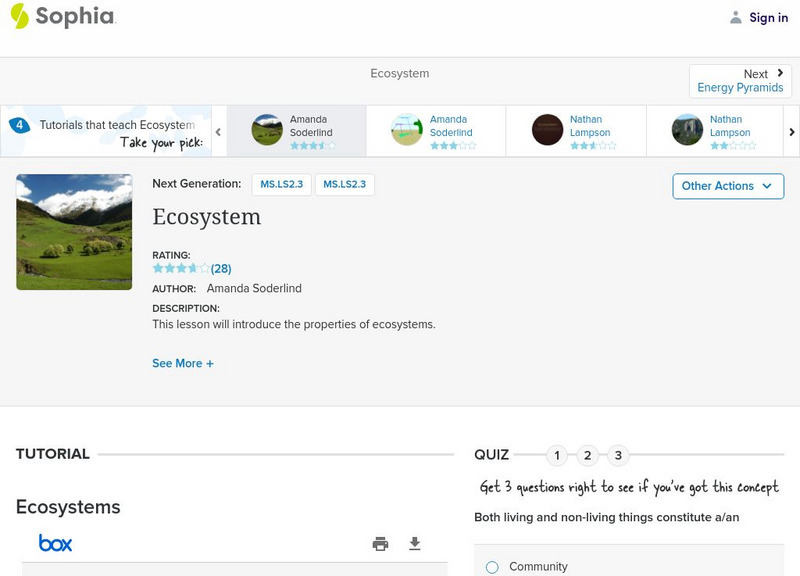Other
Abiotic Factors
Abiotic components are the nonliving components of the biosphere. Chemical and geological factors, such as rocks and minerals, and physical factors, such as temperature and weather, are referred to as abiotic components.
Sophia Learning
Sophia: Abiotic and Biotic Factors: Lesson 2
This lesson will introduce abiotic and biotic factors, giving examples and comparing/contrasting the two. It is 2 of 4 in the series titled "Abiotic and Biotic Factors."
Cornell Lab of Ornithology
Habitat Network: Habitat Feature: Snags
Find out how dead trees can be beneficial to a backyard habitat.
Cornell Lab of Ornithology
Habitat Network: Habitat Feature: Shelter for Reptiles and Amphibians
Find out why creating and conserving habitat for amphibians and reptiles is important.
Cornell Lab of Ornithology
Habitat Network: Living Fences
Find out what living fences are, and how they increase diversity.
Utah Education Network
Uen: Lesson Plan: Biotic and Abiotic Factors
This site provides a detailed lesson plan to help students grasp the concepts of biotic and abiotic. Background information is provided for the teacher and plans are given for two days.
Huntington Library
Huntington Library: Making Community Measurements: Biotic Factors [Pdf]
A lesson plan in which students explore plant communities and observe and classify different types of vegetation. Includes discussion questions, extension activities and web links, a vocabulary glossary, and handouts.
Cornell Lab of Ornithology
Habitat Network: Snags: Nature's Apartment Complexes
Find out why the sometimes hazardous or untidy dead trees are actually quite important to wildlife.
Concord Consortium
Concord Consortium: The Effect of Environmental Factors on the Growth of Plants
How do environmental factors affect the growth, development, and health of organisms? Students explore the effect of environmental factors on traits by investigating factors that affect the growth of plants.
That Quiz
That Quiz: Biotic or Abiotic? Living or Non Living?
This fun quiz has you choose between different images to decide whether it is biotic or abiotic. It also gives examples through illustrations of abiotic and biotic things.
CK-12 Foundation
Ck 12: Life Science: 12.11 Habitat and Niche
See how organisms each have their own role in the ecosystem.
CK-12 Foundation
Ck 12: Life Science: 12.10 Ecosystems
See how living and nonliving things exist together in an ecosystem.
CK-12 Foundation
Ck 12: Earth Science: Biological Communities Study Guide
Review the relationship between populations and ecosystems.
ArtsNow
Arts Now Learning: Dramatic Living and Non Living [Pdf]
Students explore the differences between living and nonliving things through the lens of the nursery rhyme, "Hey Diddle Diddle." After bringing the characters to life, the students discuss the concepts of living and nonliving and act out...
Utah Education Network
Uen: Habitat Alterations of a Riparia
This field trip is designed to physically immerse students in the concept of habitat alteration focusing on biotic and abiotic habitat alterations.
McGraw Hill
Mc Graw Hill Ryerson: Abiotic and Biotic Environments
Take this ten question quiz on abiotic and biotic environments. The quiz is multiple choice.
Other
Vida: Living and Non Living Things
Study these four images when learning about living and nonliving things.
McGraw Hill
Glencoe Online: Abiotic Factors
Take this 8 question check quiz on abiotic factors. The quiz is multiple choice.
Sophia Learning
Sophia: Abiotic and Biotic Factors: Lesson 4
This lesson will introduce abiotic and biotic factors, giving examples and comparing/contrasting the two. It is 4 of 4 in the series titled "Abiotic and Biotic Factors."
Sophia Learning
Sophia: Abiotic and Biotic Factors: Lesson 1
This lesson will introduce abiotic and biotic factors, giving examples and comparing/contrasting the two. It is 1 of 4 in the series titled "Abiotic and Biotic Factors."
Sophia Learning
Sophia: Ecosystem: Lesson 1
This lesson will introduce the properties of ecosystems. It is 1 of 4 in the series titled "Ecosystem."
Other
Hub Pages: Abiotic Factors: A Component of Ecosystem
In the environment, there are external factors that really affect organisms living within it. One of these factors is the set of abiotic factors, or nonliving variables, such as wind, ocean, day length, rainfall, temperature, and ocean...
Other
Hub Pages: Biotic Factors of Ecosystem: Producers, Consumers and Decomposers
An ecosystem is composed of biotic factors of a community of living organisms interacting with one another which we can see in food chains/webs. These diverse organisms stay together because of the need of food. Population is referred to...
Sophia Learning
Sophia: Ecosystem
A PowerPoint giving a basic definition of an ecosystem. Also explained with a definition and examples are abiotic and biotic factors of the ecosystem.



















